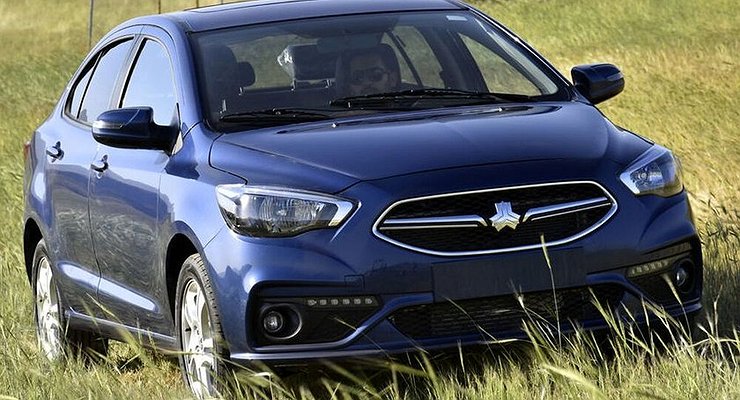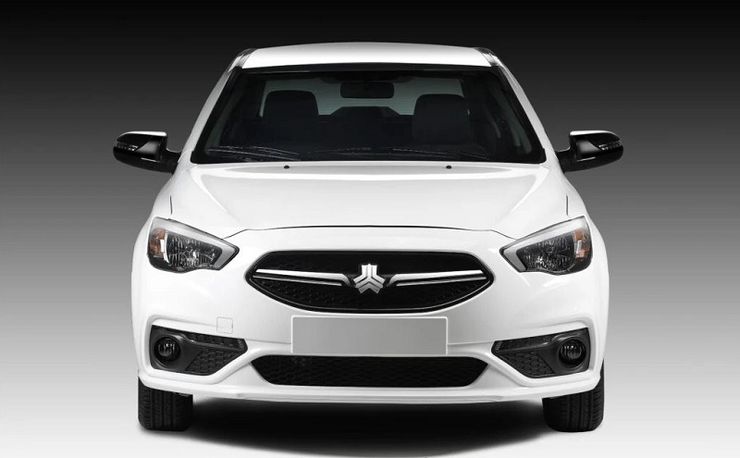Why Iran’s car industry is doomed to fail in Russia
- August 30, 2022
- 0
Today, Iranian carmakers are talking about the arrival of Iranian carmakers in Russia, almost as if it were saving the Russian car market. They say that it will
Today, Iranian carmakers are talking about the arrival of Iranian carmakers in Russia, almost as if it were saving the Russian car market. They say that it will

Let’s take a look at the Iranian auto industry through the example of the Shahin sedan, which was shown at MIMS-2022. This is one of the potential “killers” of the Russian car industry. But in fact the car is certainly not new. It began to be released at the end of 2020. According to Iranian media, the model is based on the SAIPA SP1 platform, which is based on a modified Japanese “car” Toyota B, on which the second generation Toyota Yaris was assembled (“Japanese ” rolled off the assembly line from 2005 to 2013) That is, it is based on an originally ancient architecture, which they try to pass on as a “novyak”.
The length of the four-door is 4460 mm, the wheelbase is 2650 mm. That is, it is slightly larger than the LADA Vesta. But in terms of design, Vesta is much nicer and the platform will be more modern. As for the power unit, under the hood of the Shahin runs a 1.5-litre supercharged engine with an output of 110 hp. Of. A five-speed “mechanics” or a variator is attached to it in a pair. The latter combination should horrify the buyer. Our people are used to reliable and simple engines, but here they offer a pig in a bag.
The engine itself has its origin in the old Japanese engines that were installed on the Toyota Yaris of the first generation. The car in the T-Sport version had a 1.5-liter supercharger with 150 hp. Of. Because of this, the Iranians probably “blinded” their engine. But the power was reduced from 150 to 110 hp. Of. Until now the source is a mystery and therefore the unity does not inspire confidence. It was much easier to offer a 1.5 liter “aspirated” (110 hp), which was also available from the Japanese. But not everything is smooth here either. This engine had a single row timing chain that wears out quickly. And the engine was distinguished by its maslozhorom and frequent lubrication leaks. Since the units are related, there is reason to believe that some of the “sores” were inherited from the Iranian version.
In the suspension – no revolutions. There are MacPherson struts in the front and a torsion beam in the rear. And this is at a time when many manufacturers are moving to a multilink scheme. After all, the car becomes better in this way: more driving pleasure. I’m afraid in motion the sedan will be the same as the Granta. However, if we remember the Japanese models, we can assume that the “hodovka” will hit much harder on a bad road. This means it will wear out faster. But with spare parts there will obviously be problems. It is unlikely that it will be possible to arrange their deliveries quickly, especially to the regions. And after all, they mainly buy budget cars there.
Finally, the poor quality of the plastic and the smell of phenol in the cabin will not please the driver either. Yes, and the equipment here does not radiate opulence: two airbags, cruise control and climate control, a media system with a 7-inch screen. Our “Lada” is no worse. Throw in flat seats and hard leatherette and you get the big picture. Those were the ‘Chinese’ at the beginning of the car industry in China. Now Russian buyers do not even look at such crafts. They won’t even look at Iranian even with a humane price tag.

Let’s take a look at the Iranian auto industry through the example of the Shahin sedan, which was shown at MIMS-2022. This is one of the potential “killers” of the Russian car industry. But in fact the car is certainly not new. It began to be released at the end of 2020. According to Iranian media, the model is based on the SAIPA SP1 platform, which is based on a modified Japanese “car” Toyota B, on which the second generation Toyota Yaris was assembled (“Japanese ” rolled off the assembly line from 2005 to 2013) That is, it is based on an originally ancient architecture, which they try to pass on as a “novyak”.
The length of the four-door is 4460 mm, the wheelbase is 2650 mm. That is, it is slightly larger than the LADA Vesta. But in terms of design, Vesta is much nicer and the platform will be more modern. As for the power unit, under the hood of the Shahin runs a 1.5-litre supercharged engine with an output of 110 hp. Of. A five-speed “mechanics” or a variator is attached to it in a pair. The latter combination should horrify the buyer. Our people are used to reliable and simple engines, but here they offer a pig in a bag.
The engine itself has its origin in the old Japanese engines that were installed on the Toyota Yaris of the first generation. The car in the T-Sport version had a 1.5-liter supercharger with 150 hp. Of. Because of this, the Iranians probably “blinded” their engine. But the power was reduced from 150 to 110 hp. Of. Until now the source is a mystery and therefore the unity does not inspire confidence. It was much easier to offer a 1.5 liter “aspirated” (110 hp), which was also available from the Japanese. But not everything is smooth here either. This engine had a single row timing chain that wears out quickly. And the engine was distinguished by its maslozhorom and frequent lubrication leaks. Since the units are related, there is reason to believe that some of the “sores” were inherited from the Iranian version.
In the suspension – no revolutions. There are MacPherson struts in the front and a torsion beam in the rear. And this is at a time when many manufacturers are moving to a multilink scheme. After all, the car becomes better in this way: more driving pleasure. I’m afraid in motion the sedan will be the same as the Granta. However, if we remember the Japanese models, we can assume that the “hodovka” will hit much harder on a bad road. This means it will wear out faster. But with spare parts there will obviously be problems. It is unlikely that it will be possible to arrange their deliveries quickly, especially to the regions. And after all, they mainly buy budget cars there.
Finally, the poor quality of the plastic and the smell of phenol in the cabin will not please the driver either. Yes, and the equipment here does not radiate opulence: two airbags, cruise control and climate control, a media system with a 7-inch screen. Our “Lada” is no worse. Throw in flat seats and hard leatherette and you get the big picture. Those were the ‘Chinese’ at the beginning of the car industry in China. Now Russian buyers do not even look at such crafts. They won’t even look at Iranian even with a humane price tag.
Source: Avto Vzglyad
I’m Sandra Torres, a passionate journalist and content creator. My specialty lies in covering the latest gadgets, trends and tech news for Div Bracket. With over 5 years of experience as a professional writer, I have built up an impressive portfolio of published works that showcase my expertise in this field.